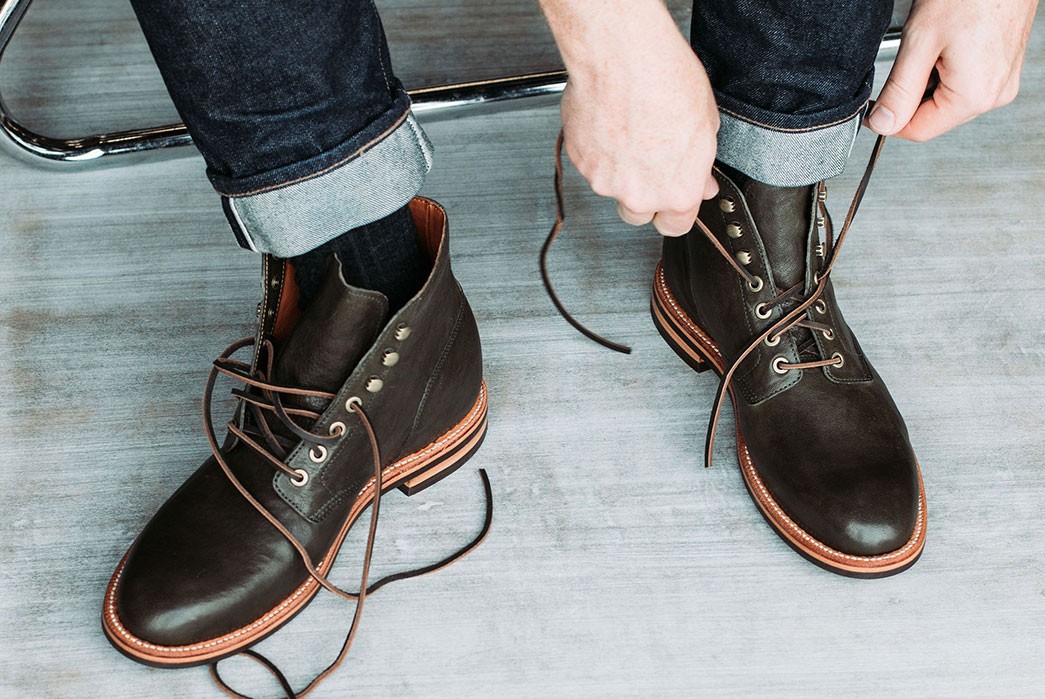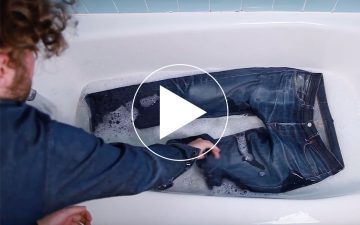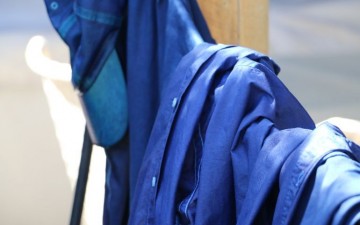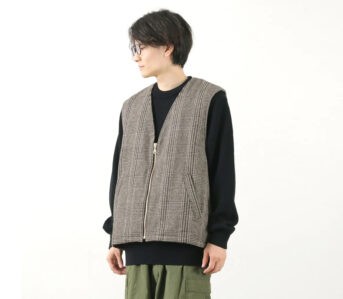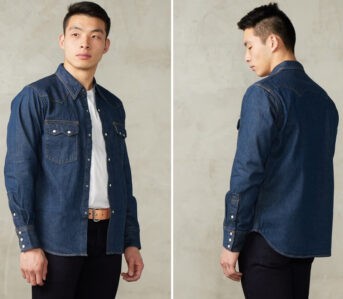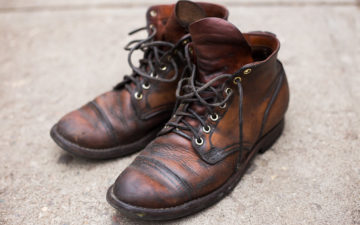
There was probably a point in your adolescence where you tried on a shoe and thought, “this is it, this is my size from here on out.” This may have been ten, twenty, or even fifty-plus years ago, and ever since, that’s been the number you rattle off when pointing out a pair to try on from a shoe store shelf.
If only it were that simple.
Our feet, like every other part of our body, are constantly in flux and grow and shrink and change over the course of our lives. This leads to a not so immutable measurement every time you slip into some new shoes. I spoke to Wyatt Gilmore, the founder of Grant Stone Shoes, someone who knows better than just about anyone about how hard it is to find the right size.
The vast majority of Grant Stone’s Goodyear welted boots and shoes are sold directly through their website and Wyatt has had countless conversations with wearers who needed a hand with finding the right fit and their actual size. He here to share some of what he’s learned to help you save your feet and find the perfect fitting pair.
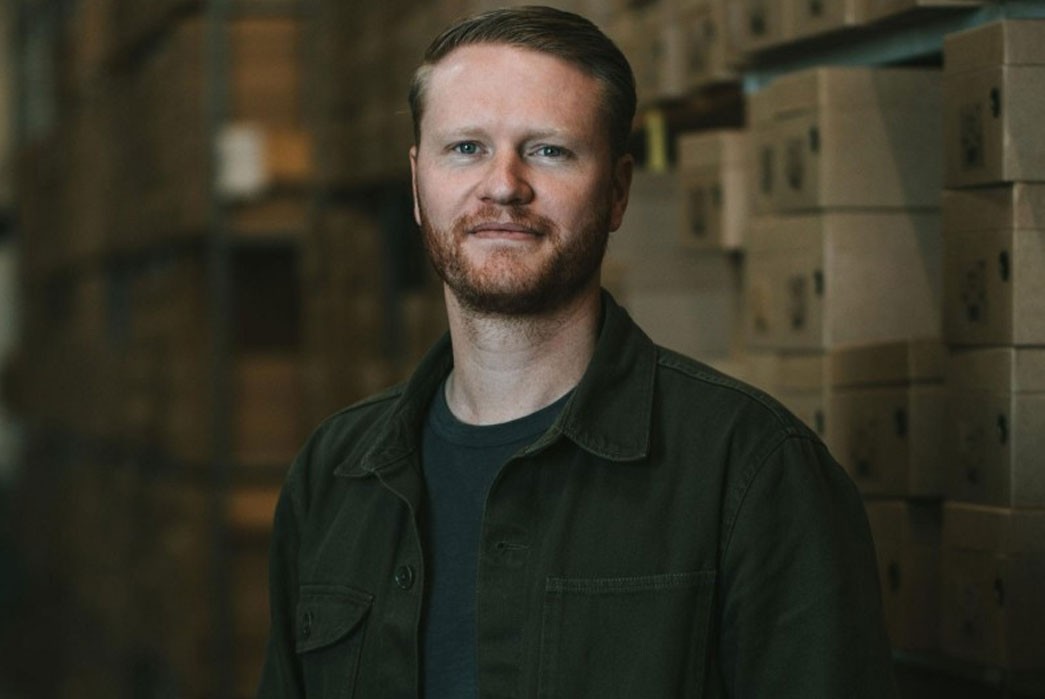
Heddels (David Shuck): What are some common misconceptions people have about their shoe size?
Wyatt Gilmore: A top contender would have to be that they might expect their shoe size to stay the same over time. Unfortunately, arches collapse over time (among other things), which make your size bigger and/or wider. Or if you lose a significant amount of weight, the overall volume of your foot can reduce. Either way, the size that worked five years ago may not work today. For example, ten years ago, when I was sampling for GS, I was wearing 10D; but today, I wear an 11D in the same last.
The other is the concept of fitting a shoe snug to break it in (stretch) it over time. We generally advise against this, especially with welted footwear that is not as forgiving.
H: What parts of the foot should you size for beyond just length?
WG: Heel to ball. For this measurement alone, a Brannock device is a great tool as the heel-to-ball is its primary function. When trying a shoe on, you want the widest part of your foot to land in the widest part of the last (the ball). You can note this measurement visually when trying a shoe on as well, looking for the ball of your foot to fall into the ball of the shoe.
Then, you take into consideration the instep and width. You want to avoid uncomfortable pressure on the instep (the top part of the foot). The heel-to-toe, or the space in front of the toes offers very little value in sizing as every toe box is different. Generally speaking, toes shouldn’t go deep into the toe box on welted footwear which is very different from the average sneaker, where your toes may almost touch the end of the shoe.
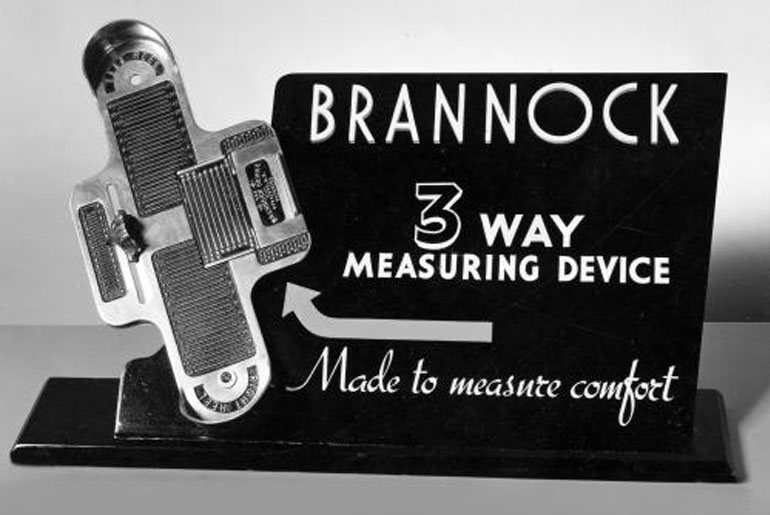
The iconic Brannock device, a shoe measuring tool that you may have known by it’s cold metal touch.
H: How should a shoe fit correctly?
WG: When trying on for the first time, there should be no discomfort or pressure throughout, while not feeling sloppy. That being said, everyone has their own personal preference on a shoe fit, no different than someone who likes a slim fit vs straight cut denim. I have friends who cannot stand having any extra room inside a boot and prefer to break them in, even though there is discomfort during the break-in. I wouldn’t suggest this to customers however, as this type of fitting can create issues. Those who have the likes of bunions, spurs, etc., could never consider doing this.
H: What are some telltale signs you have the wrong size?
WG: Pressure on the instep (the top part of your foot), ball of the foot or simply discomfort later in the day as the foot swells. As you can tell, I’m focussing a lot on footwear that is too small, as it’s the main fitting issue our customer’s come across. 90% of the time it’s pressure or the shoe being tight initially. Much of this stems from someone wearing the same size in their 30s as they did at 18.
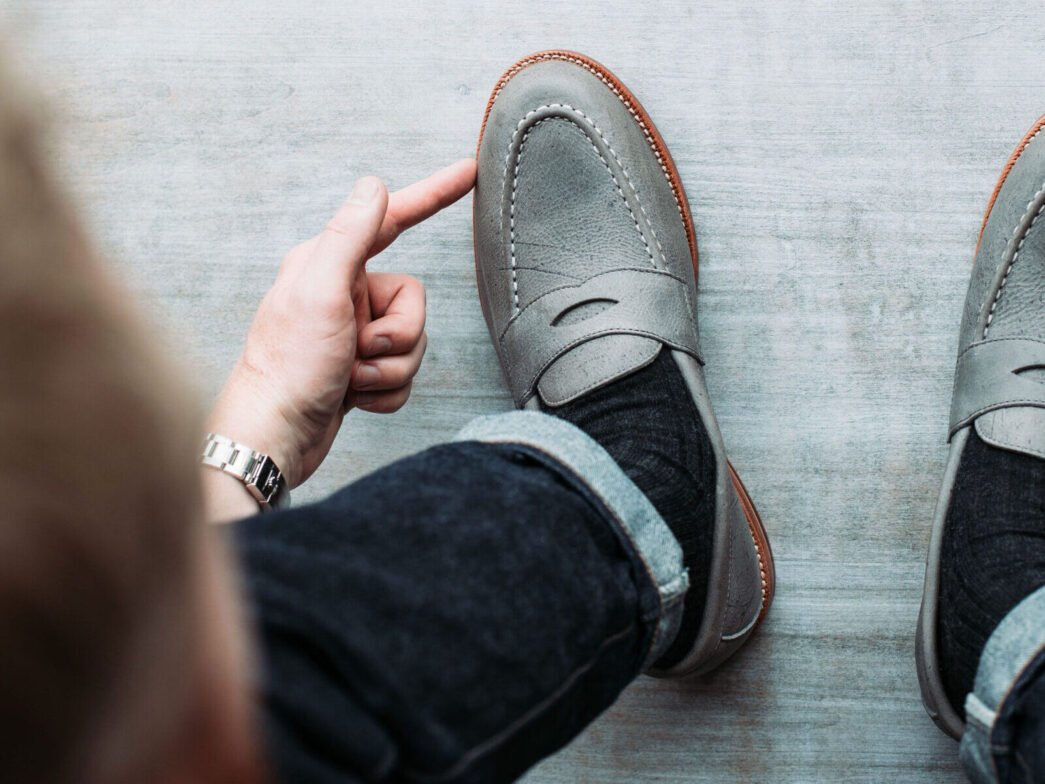
H: How do you walk a customer through the sizing process at Grant Stone?
WG: In most cases, folks will let us know what sizes they are currently wearing, the brand/model, and the fit comments along with it. It is common for someone to advise a favorite boot model and size they wear, but only after further digging, we find out there are some issues with the fit. If they have a Brannock measurement, it’s great to note, however, it doesn’t take into account the instep, so it’s more of an additional reference point than anything else.
H: What are some GS models that would fit better or worse for people with different foot shapes?
WG: To start, the most popular boot lasts (Leo and Floyd) are offered in D, E and EEE widths. Of course, those with a wider foot or higher instep will lean towards the E and EEE. When it comes to the pattern, the eye row configuration does play a role in the fit. If there is a wider distance between the eye rows, where the eyelets sit, when laced (on the last), it will better accommodate a lower instep. For example, people with very low insteps will sometimes have an issue with the eye rows touching/overlapping, preventing a snug fit. For those who have higher insteps, it pushes the eye rows further apart, so you need more room to accommodate this volume.
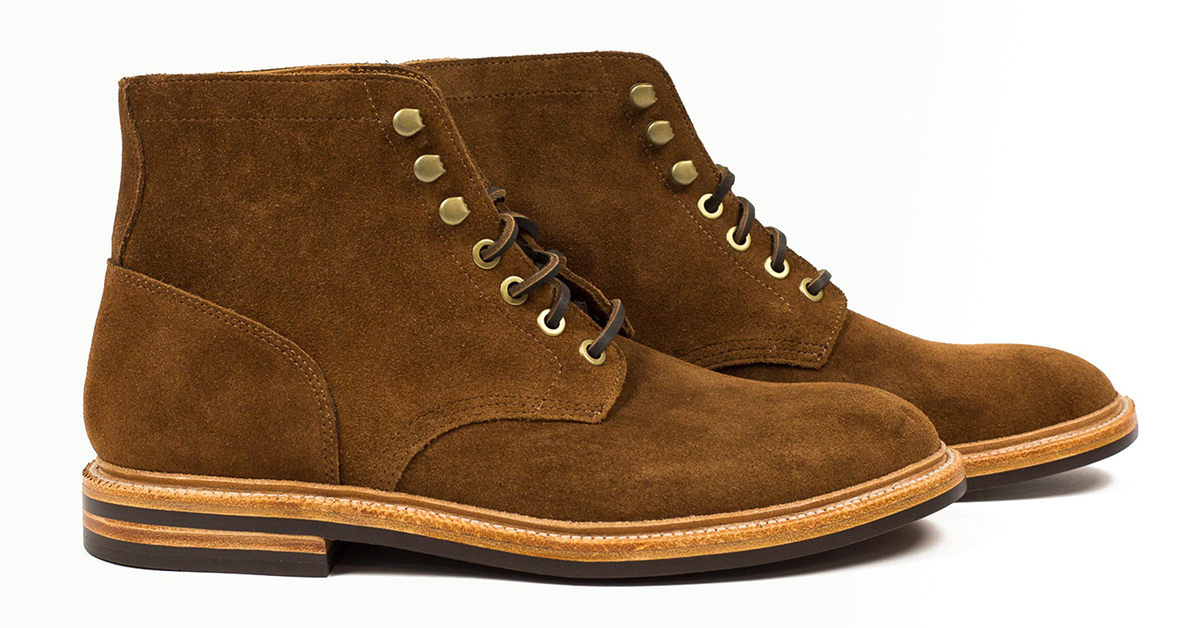
The Diesel Boot in Bourbon Suede, available at Grant Stone.
The Diesel Boot is somewhere in the middle (average) based on most footwear, so it will accommodate lower insteps. The Edward Boot pattern will better accommodate higher insteps. Mind you, these are incremental adjustments.
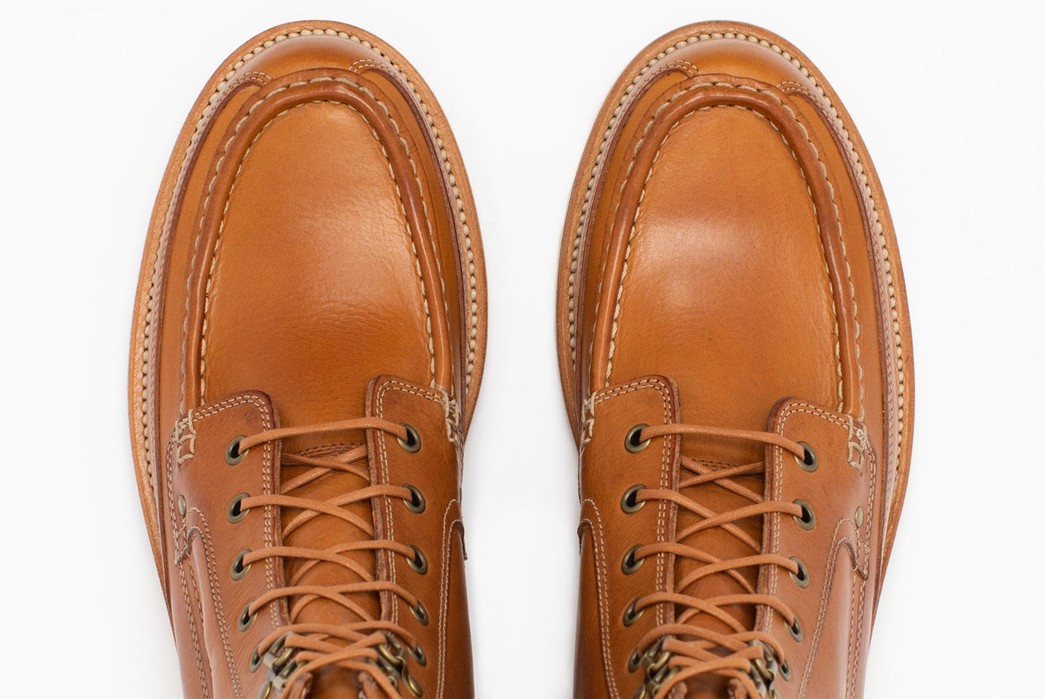
The Field Boot, with its higher moc toe instep. Also available at Grant Stone.
The Floyd last, which is used on the Brass and Field boot, has a slightly fuller instep and a taller toe box. The high-wall toe box creates extra space above the toes. We have some customers who will only wear high-walled toe box boots because they feel pressure with typical lasts shapes, sometimes due to their foot shape, or they simply wear thick socks. Others just want to avoid any pressure on the forefoot, which has proven to be good practice for those standing for long periods of time, whether at the job or otherwise.
The full Grant Stone line is available on their website, where you too can start a fit conversation with Wyatt and the Grant Stone team.

